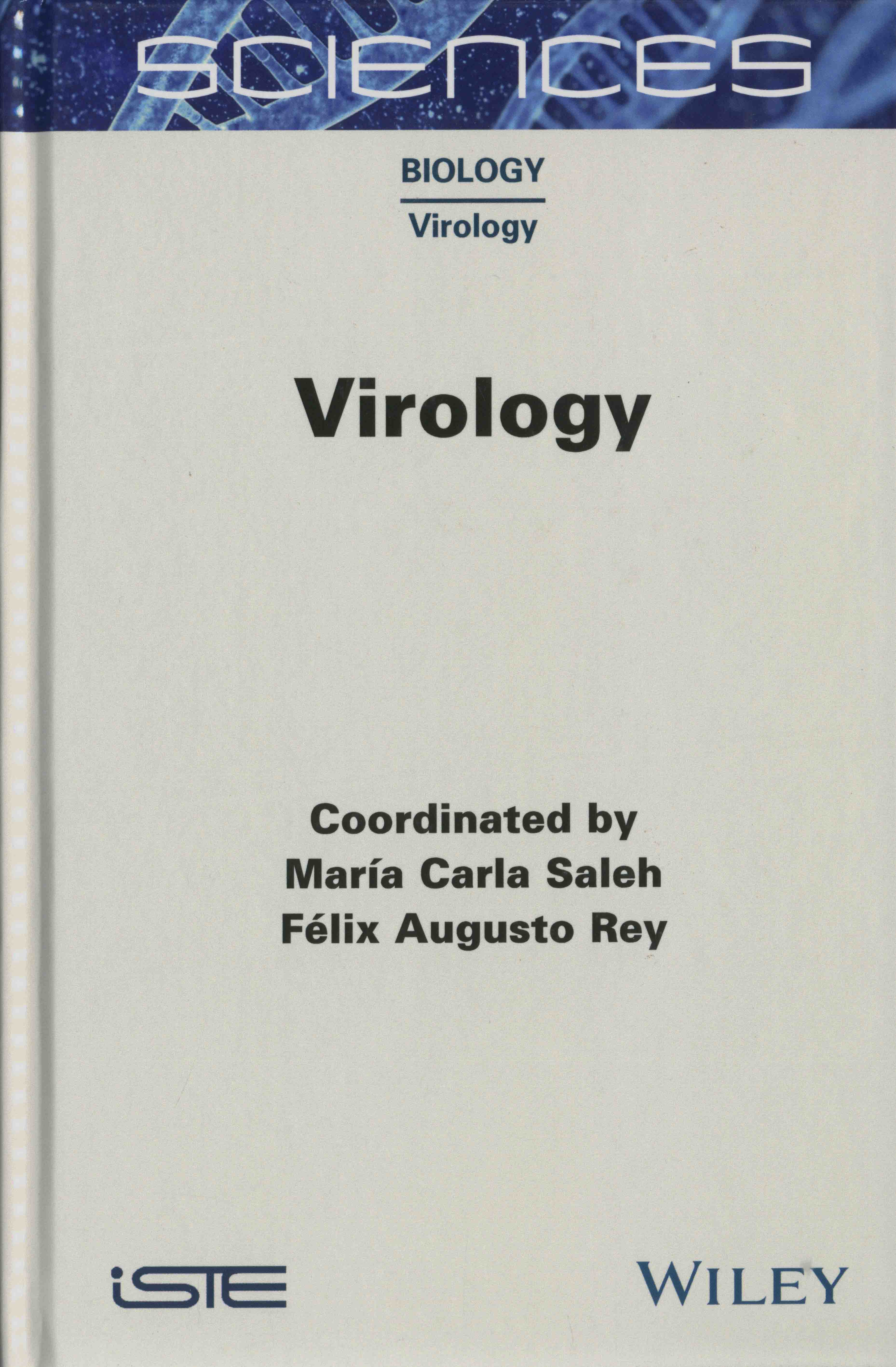 |
Virology / coordinated by Maria Carla Saleh, Félix Augusto Rey. -- London : ISTE Ltd ; Hoboken, NJ : John Wiley & Sons, Inc., 2021. – (63.164/V819v) |
Contents
Introduction
Maria-Carla SALEH and F61ix AUGUSTO REY
Chapter 1. DNA Viruses
1.1. Introduction to DNA viruses
1.2. Taxonomy and structure
1.3. Genomes
1.4. Gene expression and regulation
1.5. Infectious cycle
1.6. Viral-induced cellular survival
1.7. Disease prevalence and prevention
1.8. Conclusion
1.9. References
Chapter 2. Double-stranded RNA Viruses
2.1. Introduction
2.2. Rotaviruses
2.3. Reoviruses
2.4. Orbiviruses
2.5. Concluding remarks and future challenges to understand
dsRNA virus biology
2.6. References
Chapter 3. Negative-strand RNA Viruses
3.1. Introduction
3.2. Replication cycles of negative-strand RNA viruses
3.3. The transcription and replication machinery of the
negative-strand RNA viruses
3.4. References
Chapter 4. Viral Epitranscriptomics
4.1. Introduction
4.2. The tools of RNA modification discovery
4.3. RNA modifications deposited by viral enzymes
4.4. Editing of viral RNA by cellular enzymes
4.5. Deposition of RNA modifications on viral RNA by cellular
enzymes
4.6. Conclusion
4.7. References
Chapter 5. Defective Viral Particles
5.1. Introduction
5.2. Discovery of defective viral genomes and early research
5.3. Classes of defective viral genomes
5.4. Impacts on the virus-host interaction
5.5. Host factors affecting DVG accumulation and activity
5.6. Conclusion
5.7. References
Chapter 6. Enteric Viruses and the Intestinal Microbiota
6.1. Introduction
6.2. Enteric picornaviruses
6.3. Mouse mammary tumor virus
6.4. Reoviruses
6.5. Noroviruses
6.6. Astroviruses
6.7. Overall conclusion
6.8. References
Chapter 7. Plant-Virus-Vector Interactions
7.1. Introduction
7.2. Non-circulative virus transmission
7.3. Circulative virus transmission
7.4. Receptors in vectors of non-circulative viruses
7.5. Receptors in vectors of circulative viruses
7.6. Circulative, propagative virus binding and entry
7.7. Virus transmission morphs for non-circulative viruses
7.8. "Omics" tools for studying virus-arthropod interactions
7.9. Vector innate immunity in response to viruses
7.10. Host and vector manipulation by plant viruses
7.11. Summary points
7.12. Acknowledgments
7.13. References
Chapter 8. Evolution and Origin of Human Viruses
8.1. Introduction
8.2. Origin and ancient evolutionary history of human viruses
8.3. Sources of viral genetic diversity
8.4. Viral evolution and host range
8.5. Recent evolution of human RNA viruses - selected examples
8.6. Conclusion
8.7. References
List of Authors
Index